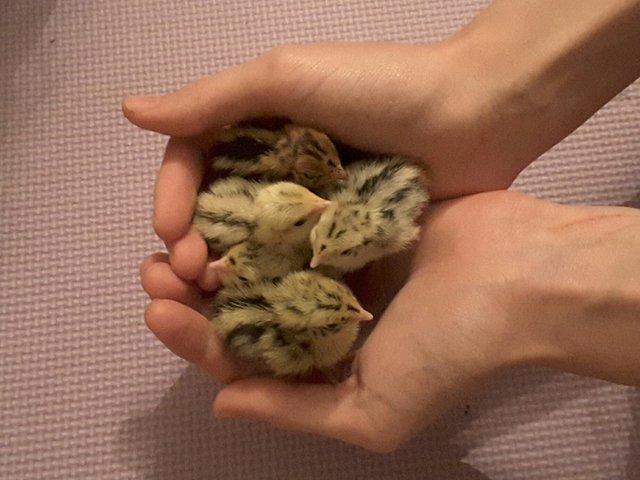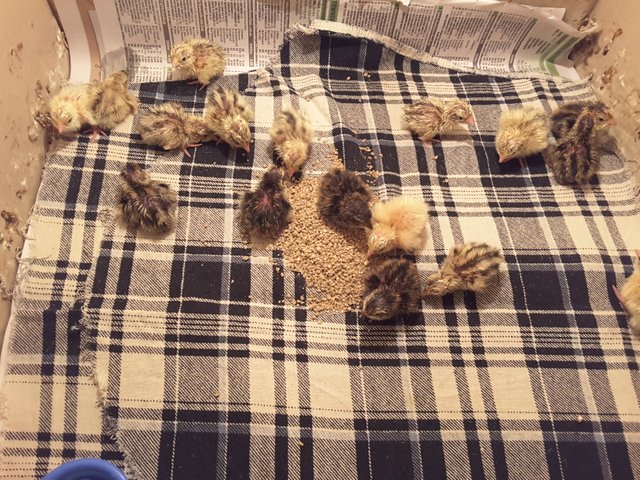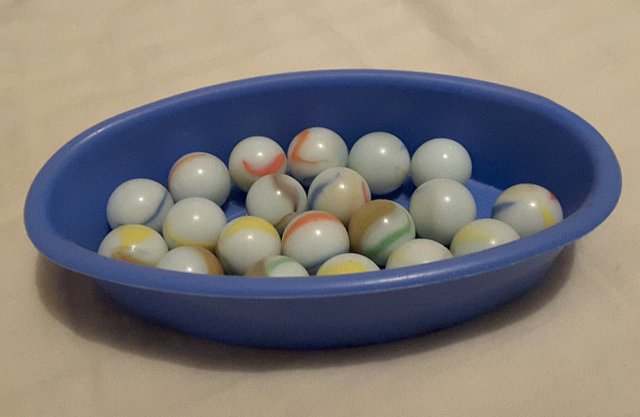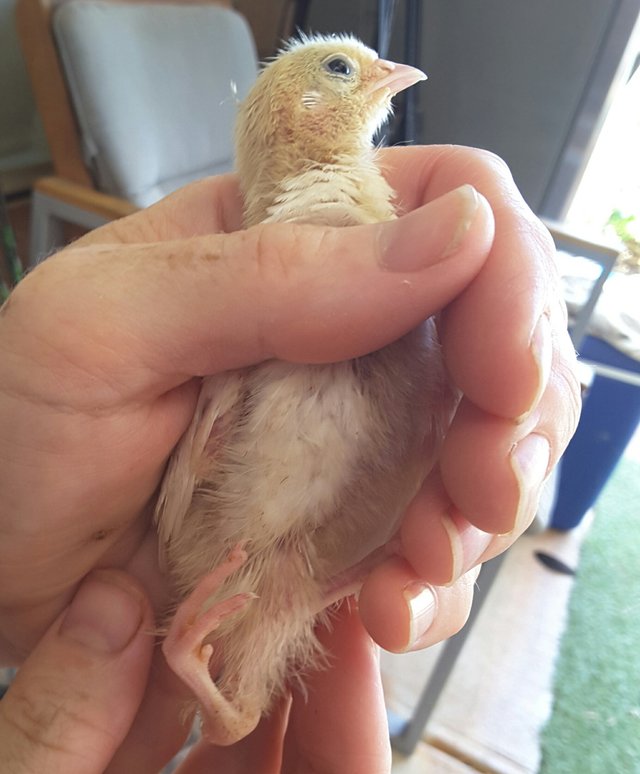Hatching Japanese (Coturnix) Quail.
It's rare for Japanese/coturnix quail to sit on eggs any more. Some have no instinct whatsoever and will just drop their eggs wherever they happen to be. Others will go for more sheltered, secluded areas and will often add their egg to a clutch already there. A small few will even seem to gather the eggs under them and sit for a bit, but this rarely lasts more than half an hour, then they seem to forget what they were doing, wander off and forget about them.
Some people have had success getting coturnix to hatch and raise chicks, but when they do it usually has to be a male/female couple on their own without other disturbances. So these quail are mostly incubator hatched.

Incubator Hatching
They can be hatched in the same sort of incubator as chicken eggs, but one slight adjustment should be made. The spaces in the rack are usually quail head sized and it's easy for them to get their head stuck and drown in the water well beneath. Even my incubator which is made for quail as well has one hole, presumably to get your finger in to lift the rack out, which is baby quail head sized and I have lost a quail hatchling to it. So I line the rack with a foam/rubber, mesh, grip liner. Someone else I know uses Chux cloths. Whatever you use, it needs to be porous enough to let the moisture circulate. Quail are slightly prone to spraddling if they slip on smooth surfaces, so having the liner in at hatch should help avoid that.

The incubation temperature is the same as for chickens, 37.5°C (99.5°F), but the incubation period is three days shorter at 18 days. Humidity and temperature stability at hatch is more critical for quail eggs than chicken eggs, as the eggs are so much smaller and prone to losing heat and humidity more easily. So I try to avoid opening the incubator at all until they've all hatched.
For the first 24hrs they need no food or water, so it's fine to leave them in the incubator. However, I do find that quail are more likely to hatch over a couple of days than chicken chicks. So if I feel I really need to open the incubator, adding warm water to the reservoir is helpful in getting the temperature and humidity back into balance quickly.
Brooding
Once they're out in the brooder, for the first few days I'll line the floor with rags. Firstly to provide a stable, non-slip surface for them and secondly to make sure they're not eating sawdust or wood shavings so they can fill up on food properly. Quail grow incredibly fast, reaching maturity in 6-8 weeks, so they need a high protein intake. They are so small at hatch that even a purpose made gamebird starter crumble needs to be ground down to be small enough for them to eat.

For water, I use a shallow bowl with marbles in it. This is to avoid the risk of drowning, when they are still unsteady in their feet. They will also climb in the bowl, so it will stop them getting more than their feet wet and getting cold.

Chicks don't regulate and retain their heat well at hatch, so they'll need warmth for about three weeks. Temperature in the brooder should start at about 35°C (95°F). The first few days are the most critical for keeping them warm. After about day 3 you might notice that they don't huddle towards the heat source as much and will wander around a bit more. If they aren't, then it may be a little too cold for them still.
I like to have my brooder so that the heat is one end and they can move away from it when they want. They seem to build up their body's management of temperature quicker this way. I don't actually have a thermometer in the brooder, so I guage by their actions. Shivering is never a good sign and means that more heat is needed. If they are huddled around the heat source, but content, then they are okay, but it could be getting a little cool. If they are as far away from the heat as possible then it is probably getting a bit too warm. If they are panting as well, then it's most definitely too warm. Ideal is when they are spread out.
Hatching Issues Can Happen
Coturnix quail hatch rates tend to be lower than chicken hatch rates. Quail are more prone to dying before hatch and even when I've gotten hatch rates up, the later hatchers may still have issues which cause early mortality, like improperly developed intestines.
I’ve had occasional issues with hip displacia from the first batch of eggs I hatched. The quail will hatch with spraddle leg, which I seem to be able to correct initially, but as they grow and more weight goes onto the legs it becomes apparent that the hip is not being held in a socket and the leg/s becomes useless.

A young quail with hip displacia.
Taking the place of nature and euthanising when hatchling doesn't develop properly is the worst thing about hatching, but I feel it's something people should be aware of. Most of the research I did on hatching never mentioned this.
The Breeding Flock
On average, coturnix quail will reach sexual maturity in 6 weeks, although I've had a quail start crowing at 3 weeks and 8 weeks is more common for females to first start laying.
In a breeding flock it's best to aim for a ratio of about 1 male to 4 or 5 females. This will keep the males from stripping the females’ head feathers and discourage fighting between the males. For such cute looking, little feather balls, they are surprisingly aggressive. If they single out a placid male, they will go for the eyes! If I'm a little late in removing the excess males at the start of the new breeding season, I'll have a few bald females and half plucked males trotting around. Luckily once the ratio is back in balance, feathers are quick to grow back.
The breeding season will depend on day length, but will generally start about a month into spring and finish in the second or third month of autumn. Over winter they will take a break and have a moult to replace their old feathers. The males will stop crowing and harassing every other quail in sight and the females will stop laying.
For more on quail, including how to sex them:
Quail Keeping Basics

Posted using Partiko Android
I knew exactly zero of these things 20 mins ago.
Me too! I am always surprised by her posts.
They are so cute!
Awwww thanks for the pics I miss having little peepers around. Such a healthy looking brood!
Shame they have to grow so fast! Mind you, they're still pretty cute as adults.
awww, so cute. love your article. you do wonderful work. love your style.
What a great post @minismallholding very informative, id love some birds in the garden at some point im just not convinced ive got the space for it, some day though.
It was interesting to see you posting about the harder points of keeping the quail as its not something id seen much of when reading around either, that dysplasia doesnt look nice ☹
Thanks for sharing
Posted using Partiko Android
Thank you.
Quail are a good solution for small spaces, but they can't free range as they won't come home to roost! You only really need about an A4 sheet of paper sized area per quail.
Posted using Partiko Android
Thats really interesting to hear about the size requirements may have to look into this further. Thanks again
Posted using Partiko Android
Fantastic looking birds - but so fragile when young.
Even as adults they can keel over at a moment's notice. They're odd little things really.